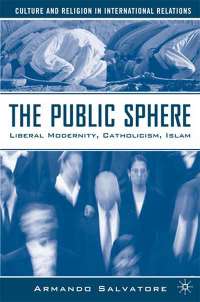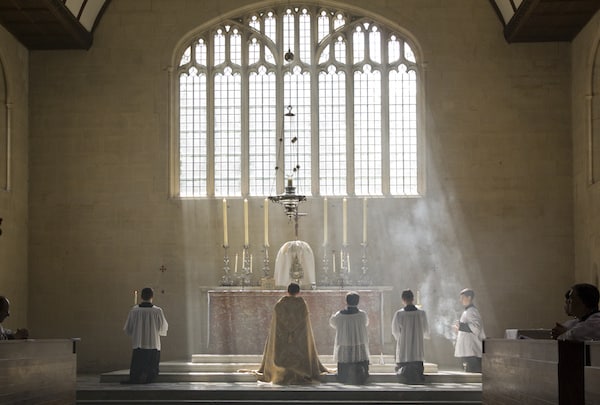Of Allegra’s excellent list of recent publications pertaining to Islam, The Public Sphere: Liberal Modernity, Catholicism, Islam is perhaps the least anthropological. Nevertheless, I was glad to get the opportunity to review Professor Armando Salvatore’s book, one of a remarkable number he has written in recent years on the topics of Islam, modernity, social practice, and the common good.
Armando Salvatore, The Public Sphere: Liberal Modernity, Catholicism, Islam. Series: Culture and Religion in International Relations. Palgrave Macmillan (2007). 0230622313. 304 pages.

The book offers a series of ambitious, impressive and sophisticated theoretical and interdisciplinary discussions, mobilising figures such as Baruch Spinoza, Giambattista Vico, Ludwig Wittgenstein, Talal Asad, Alasdair McIntyre, Taylor and Eisenstadt, and concepts such as the Axial Age, telos, poiesis, phronesis, and publicness understood as an ego-alter relationship.
Having set out the problematic nature of the modern understanding of the public sphere, Salvatore uses the first two chapters to refine his approach. In Chapter 1 he aims to disentangle some key terms, specifically ‘tradition’, ‘religion’ and ‘civilization’, while in Chapter 2, he seeks to develop a notion of ‘discursive tradition’ that ‘ties… life form and language game, and thereby circumvents the pitfalls of phenomenologically impregnated visions of the “lifeworld”, as well as postphenomenological versions of pragmatism that resist incorporating a notion of tradition’ (72). The purpose of this exercise, Salvatore tells us, is to help us grasp more carefully the dynamics of change involved within his genealogy.
The next two chapters, ‘The Public Reason of the Commoner’ and ‘The Collective Pursuit of Public Weal’, explore how particular historical instances of religious traditions, namely Roman Catholicism and Sunni Islam, might be understood within his genealogy. Chapter 4 is the most relevant section of the text for those in Islamic Studies. Here Salvatore gives a useful historical and sociological introduction to Islamic traditions and jurisprudence, before connecting his overarching argument to the theme of maslaha, ‘the conceptual proof stone for underpinning theoretically informed but practice-oriented views of the common good which were suitable to become platforms for concrete articulations of the pursuit of public weal’, and the work of Andalusian jurist Abu Ishaq al-Shatibi (d. 1388), who is also placed in conversation with Thomas Aquinas (d. 1274).

Salvatore’s work engages with a significant concept within anthropology, and it is easy to sympathise with his claim that ‘most social science tends to take [the construct of the public sphere] for granted, either glorifying it as the key to a scholarship committed to rationalization and democratization, or willfully ignoring it for disguising more relevant structural issues and cultural conflicts in society’ (31).
For Allegra readers and their students, the book’s most important contribution is the comprehensive way it complicates the idea of the ‘public sphere’, and how we might relate it to ideas such as religion, secularity, universalism, tradition and rationality. Salvatore might be usefully compared to Asad here, and it is an interesting coincidence that the title of this text seems to echo Asad’s ‘Formations of Secular: Christianity, Islam, Modernity’.
The book is not without weaknesses, which will probably frustrate some readers more than others. Anthropologists, for instance, might find most unconvincing the various deterministic, normativist and universal claims within the text. Furthermore, while his cross-cultural readings of Islamic traditions are a welcome contribution to public sphere literature, as Dyala Hamzah has already noted, they represent ‘a normative championing of marginal strands, rather than a historical reconstruction’. Finally, social theorists and historians might question both the soundness of his ego-alter model of publicness and the meaningful limits of Axial Age terminology.
Grounded in social theory, but touching on a wide variety of themes, scholars from a range of disciplines will find parts, if not all, of this book of interest. However, in view of both the author’s dense writing style and the complexity of his enterprise, the study of Salvatore’s ‘Public Sphere’ in its entirety might best be reserved for postgraduate level.





